The dark side of India’s colourful Holi celebrations... experiencing the festival as a female traveller
The Hindu festival is a riotous explosion of colour, creating stunning images of joy and happiness – but amid the beauty, Tamara Davison finds that the celebrations can leave women feeling vulnerable and intimidated
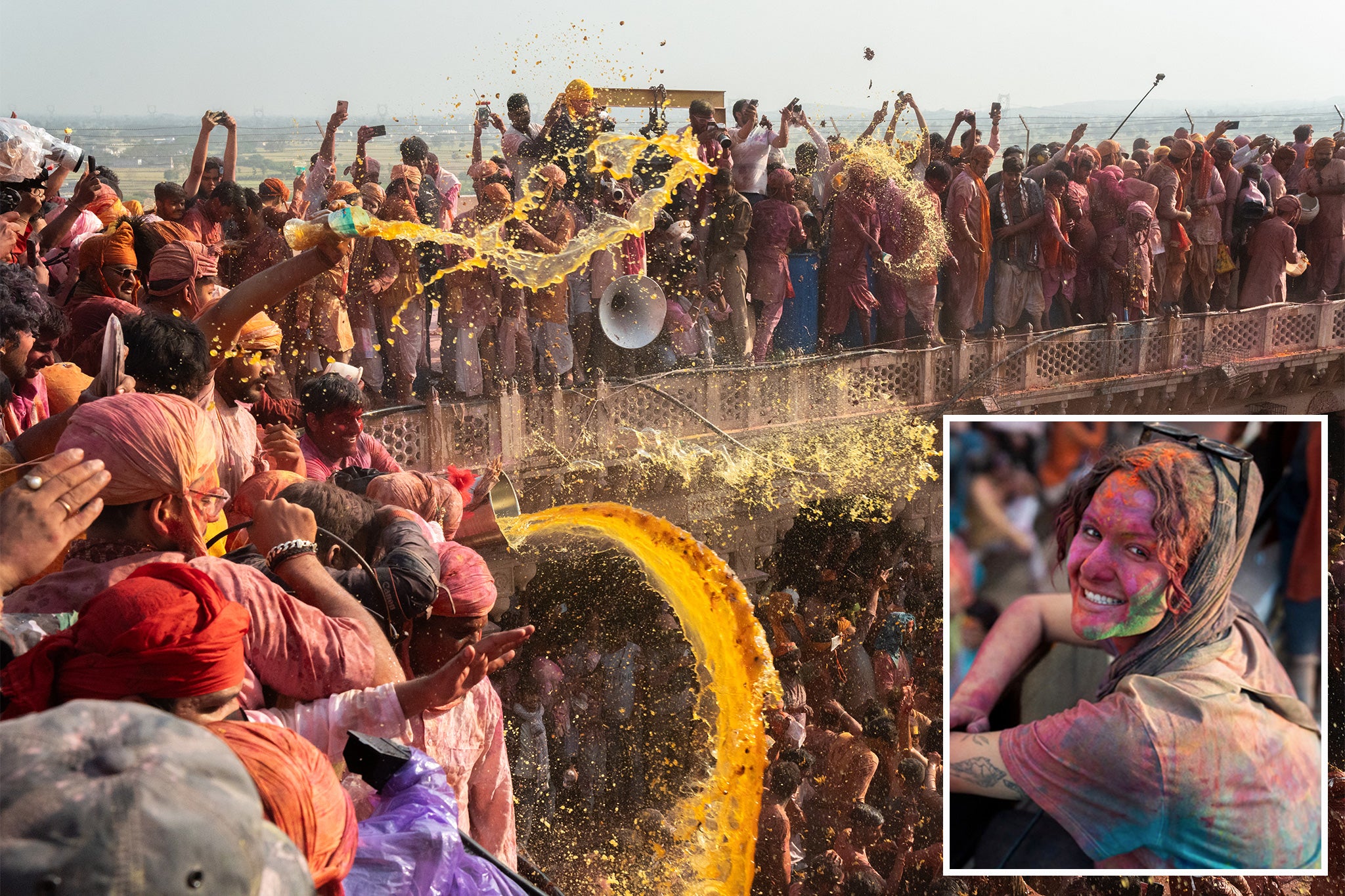
A vibrant scene begins to unfold as I near my destination. Indians drenched in every colour of the rainbow catch my eye in increasing numbers. Red, blue, and orange hues are splashed across their faces, clothes and hair. I was in the right place.
Each March, India erupts in a colourful cloud of chaos to mark the major Hindu holiday of Holi. Every region celebrates Holi uniquely; some take the explosion of colours to extremes.
Among such places are Mathura, Vrindavan, and neighbouring towns in the state of Uttar Pradesh. I planned to visit them all.
Over 10 days, revellers perform traditional ceremonies unique to the region alongside enormous and raucous displays of colour and buckets of brightly dyed water.
On the first day, the atmosphere was electric as I joined the slow-moving procession of people and bursts of colour rained over the crowd, prompting ecstatic cheers.
But within seconds, a handful of powder was forcefully launched into my face. Wiping the colourful dust from my eyes, an intense and sometimes aggressive bombardment of more colour and water followed. I’d been inaugurated into the Holi cohort alongside my partner, but I couldn’t shake a feeling of vulnerability – of being targeted.
I’d been warned that female attendees must take extra precautions during Holi. Not only was I one of the few women in the crowd, but I was also one of the only foreign tourists. Was there a darker side to the vibrant colours I’d seen in all the pictures? I was about to find out.
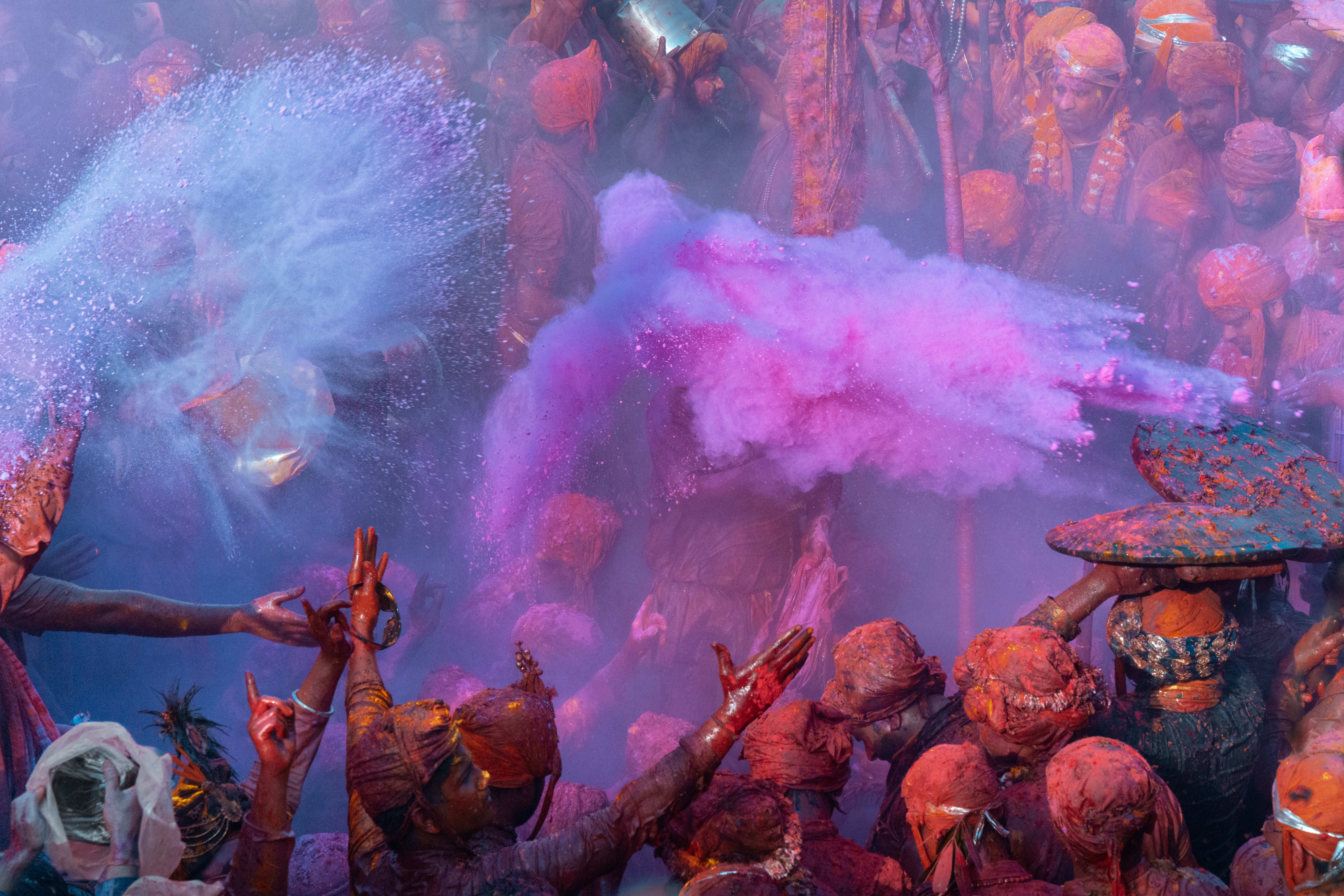
Holi is a celebration rich in history that captures the ultimate vibrancy of Indian culture.
Numerous interpretations of its origins and significance exist, and it’s said to embody the spirit of love, celebrate spring, and the triumph of good over evil. One legend centres on the Hindu deity Krishna, who coloured his lover’s face so they could match. As Mathura is considered the birthplace of Lord Krishna, Holi takes on added significance for those who worship the figure.
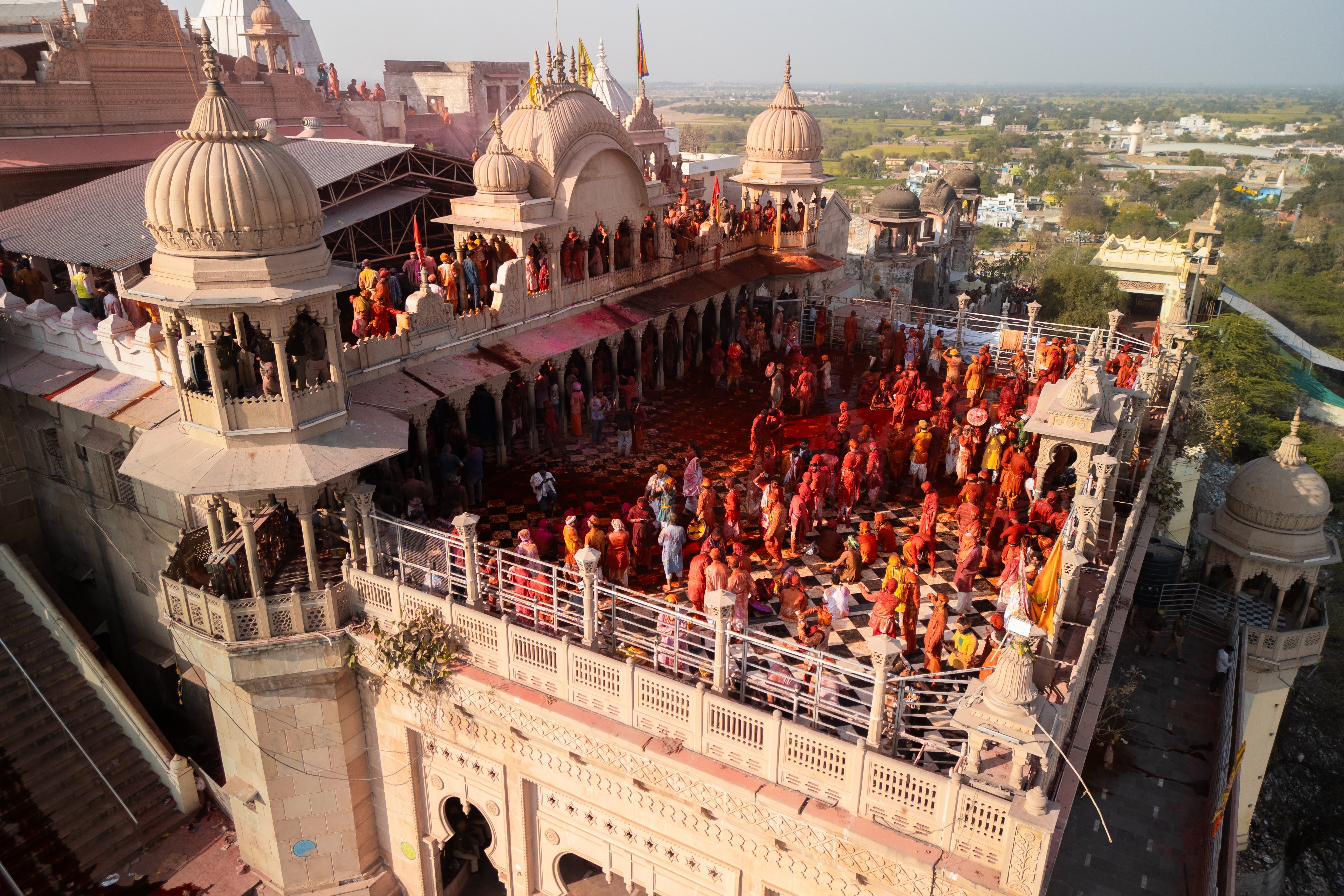
The deeply spiritual element that frames this festival is both moving and mesmerising. So are the few women-focused traditions, such as Lathmar Holi. This regional tradition in Barsana and Nandgaon sees local women draped in beautiful outfits take charge and playfully “beat” men with bamboo sticks, reenacting an encounter between Krishna and his lover, Radha.
However, such symbolic depictions of empowerment don’t always translate across all the Holi festivities. Perhaps we should all be armed with bamboo sticks – because being a woman at Holi can be tough. Many remained on the sidelines rather than join in, and I’d often exchange supportive glances with brave female revellers as they were showered in colour. Having a male companion by my side was of little comfort as I was singled out, doused with powder and grabbed for selfies. There were times I felt violated, anxious, and triggered by non-consensual touches.
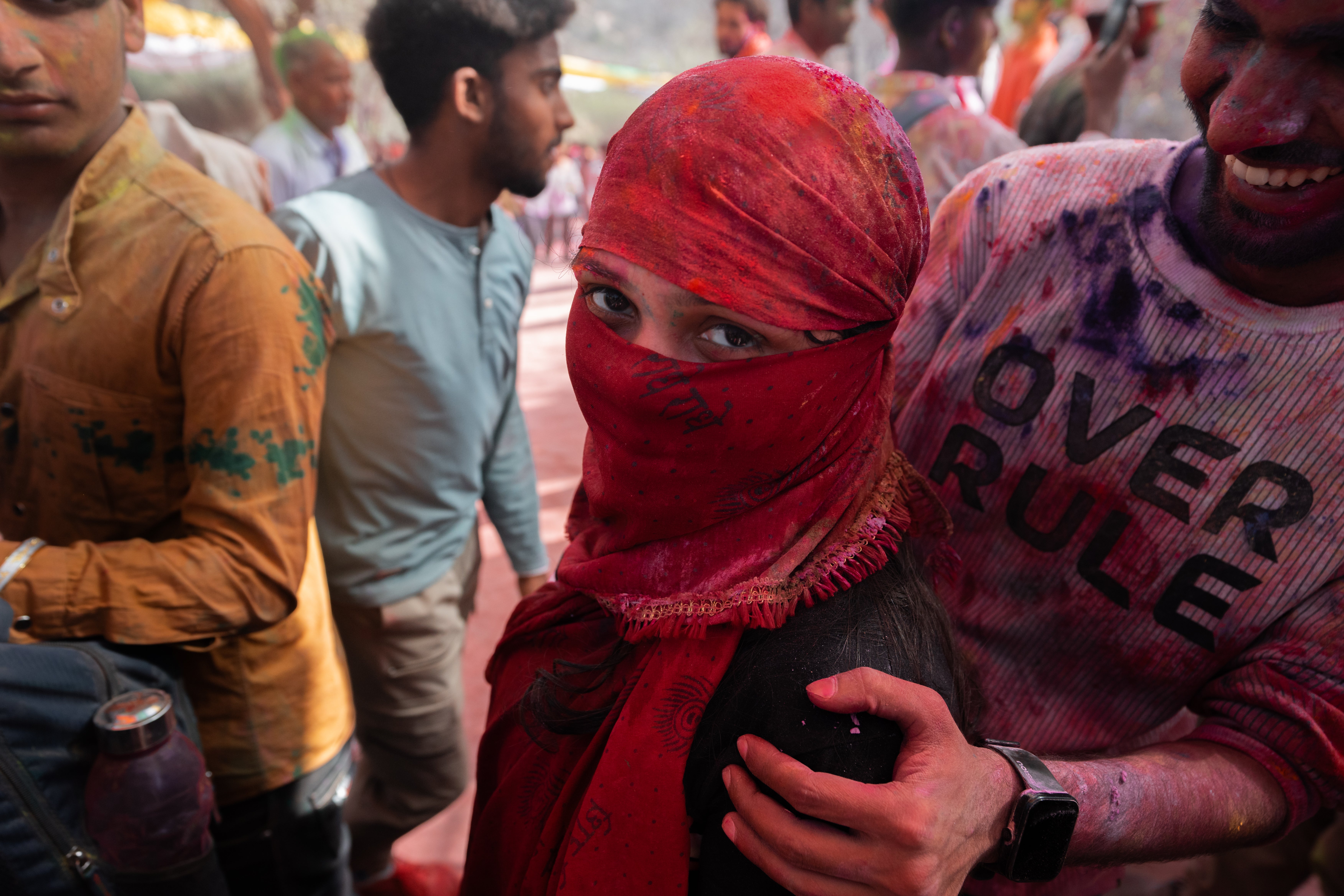
The focal point of most Holi celebrations revolves around epic powder wars in significant Hindu temples. Getting to the temples means running the gauntlet of meandering, overcrowded streets, where thousands of people dance, sing, and wait with bags of colour, known as gulal. Of course, there’s no escape, and embracing the chaos is part of the fun. But making it into the temple was challenging, and the energy crescendoed as we waited to get in.
Joining the mass of devotees pushing their way inside is daunting, as one wrong step would send you under a stampede of feet. Pressed against the bodies of the predominantly male crowd, I tried to make myself as inconspicuous as possible – I didn’t want anyone to notice a woman. Beyond the unquestionable excitement of the experience, you always have to be careful at Holi.
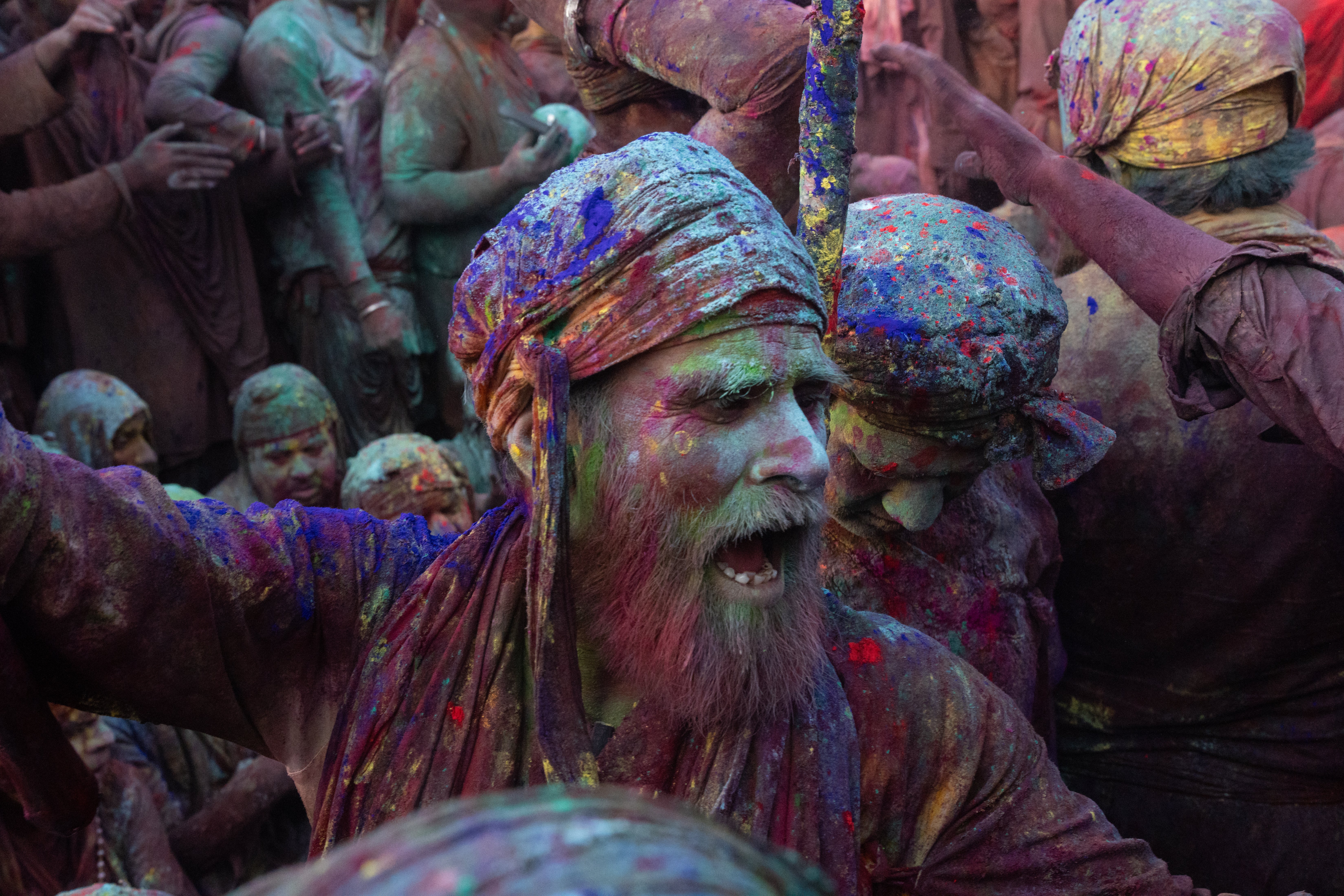
While the first few days were a trial by fire, I eventually became accustomed to practices that made Holi more enjoyable: sunglasses to protect my eyes and oil to prevent my hair from being permanently stained green. I’d mentally prepare for the day ahead and always identify an exit route if things went awry.
New experiences and a deeper understanding of the Hindu celebration were constantly unlocked as the days of Holi progressed.
At the heart of these rituals, people seemed blessed by the colour itself. The hues of the crowd gradually changed from red to pink to yellow, and in pure moments of ecstasy, worshippers bathed in layer upon layer of thick, colourful powder. Most people were warm and accepting as they gently marked my face with colour and wished me a “Happy Holi”. These celebrations occurred daily, often spilling into the streets, leaving brightly coloured marks across the roads and walls.
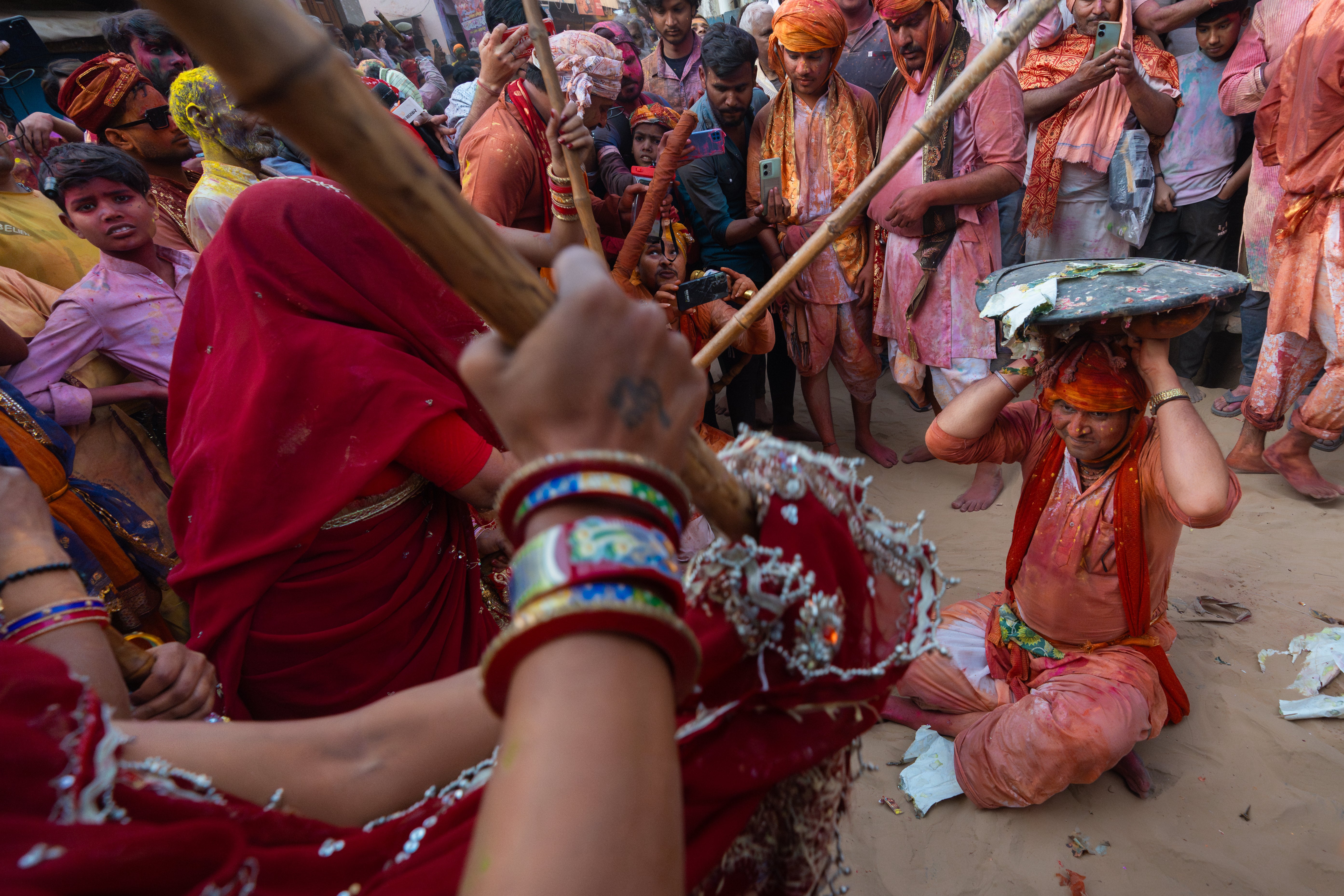
Genuine connections, breathtaking sights, and moments of pure joy and frustration framed the emotional rollercoaster that Holi presented. Some days were more intense than others, and each guaranteed to leave me drained of energy by the evening. The gutters would run pink with dye as we tried to scrub our stained skin every night.
Holi has been a profound cultural immersion unlike anything I’ve ever experienced. Mathura’s Holi, in particular, has left a lasting impression – but it’s an experience I don’t need to repeat soon. However, this smorgasbord of colour and chaos perfectly represents India’s vibrancy and unique spiritual roots. If you practice caution and come prepared, it’s a must-do experience for those brave enough to submit to the chaos.
Read Independent Travel’s ultimate travel guide to India




Join our commenting forum
Join thought-provoking conversations, follow other Independent readers and see their replies
Comments